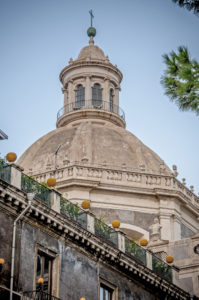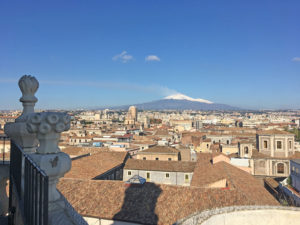The Badia di Sant’Agata (St. Agatha’s Abbey) offers many panoramic viewpoints for contemplating the beauty of the entire historic centre. It’s certainly worth taking the long staircase that leads to the upper terraces and the walkway that surrounds the dome.
From here you can admire the entire city: the Bellini Theatre, the Cathedral, the Ursino Castle, the churches of Via Crociferi and all the artistic marvels that the city of Catania has to offer.


The smell of wax is one of the most characteristic scents within the church and in the streets of Catania during the celebrations of the patron saint.
Votive candles are still produced today in Catania’s artisanal workshops using techniques and raw materials steeped in ancient knowledge.
There were originally two types of candles: those made with beeswax, which were more refined and expensive, and those made with animal fat, which were far cheaper but gave off an unpleasant smell and smoke.